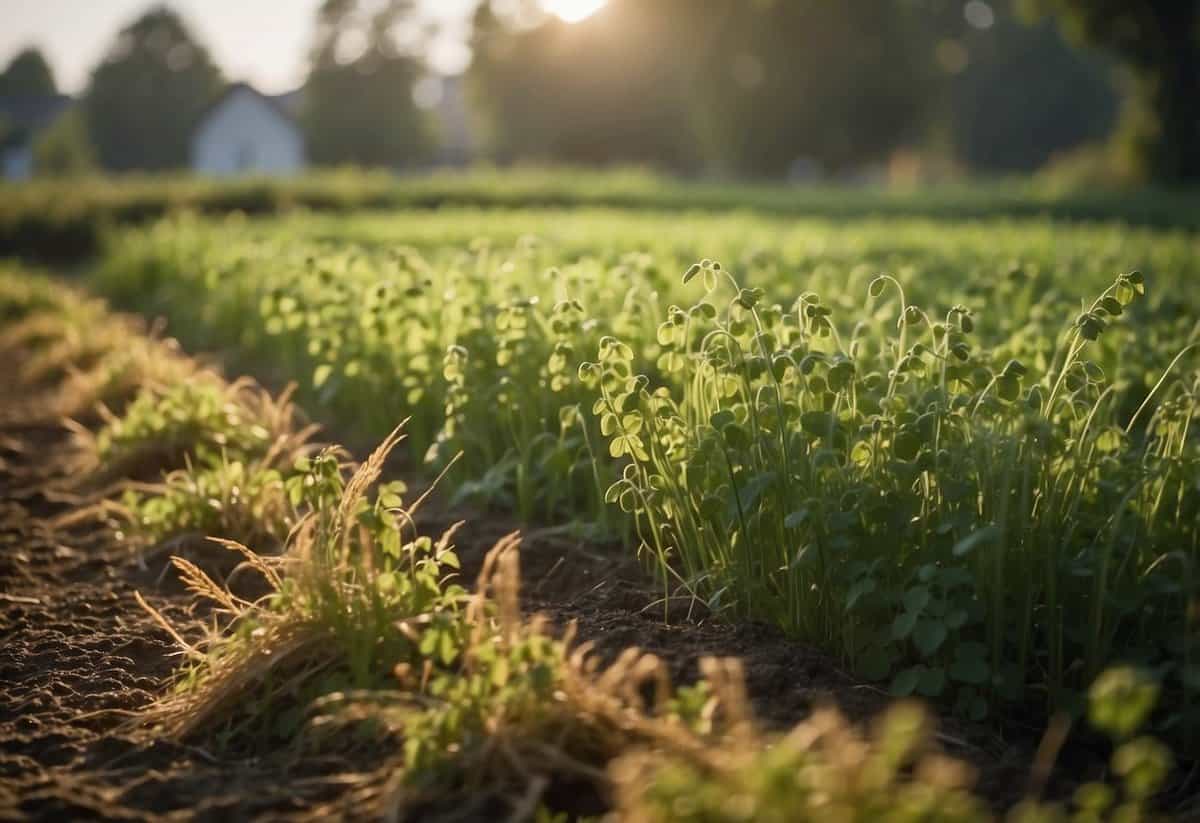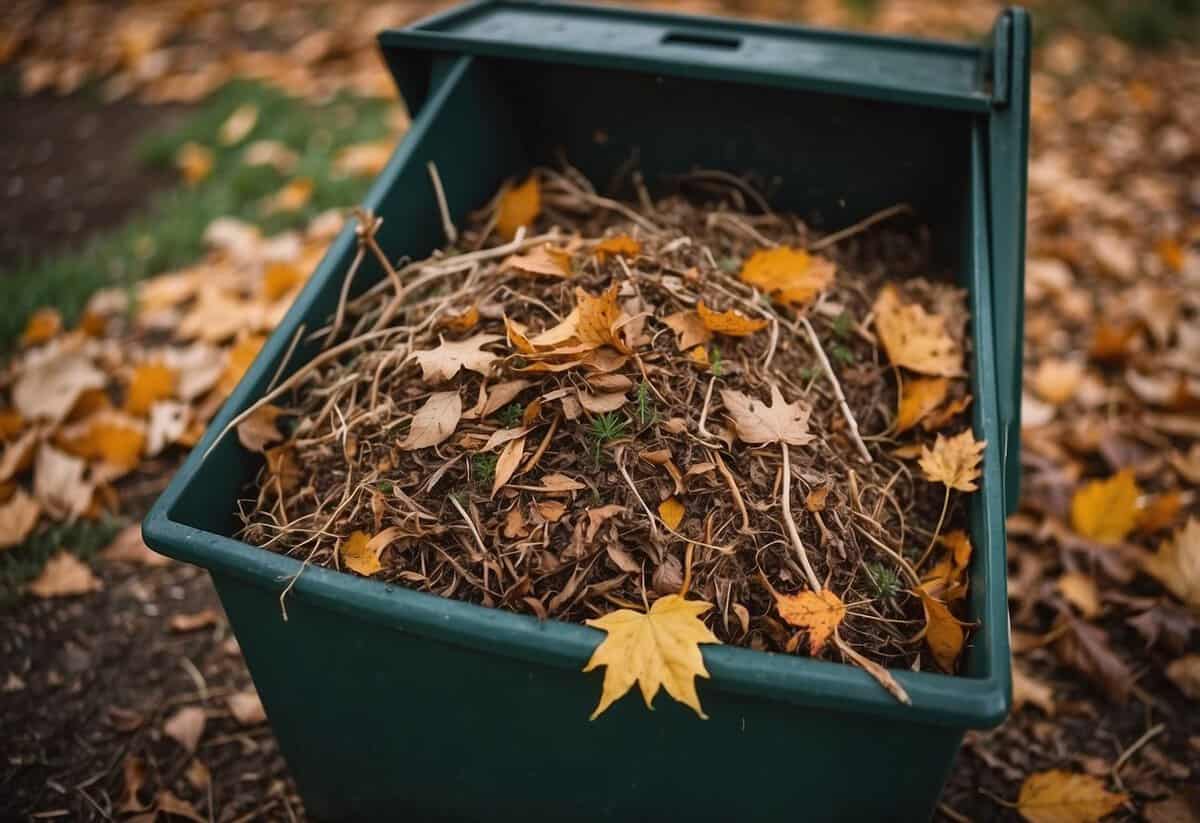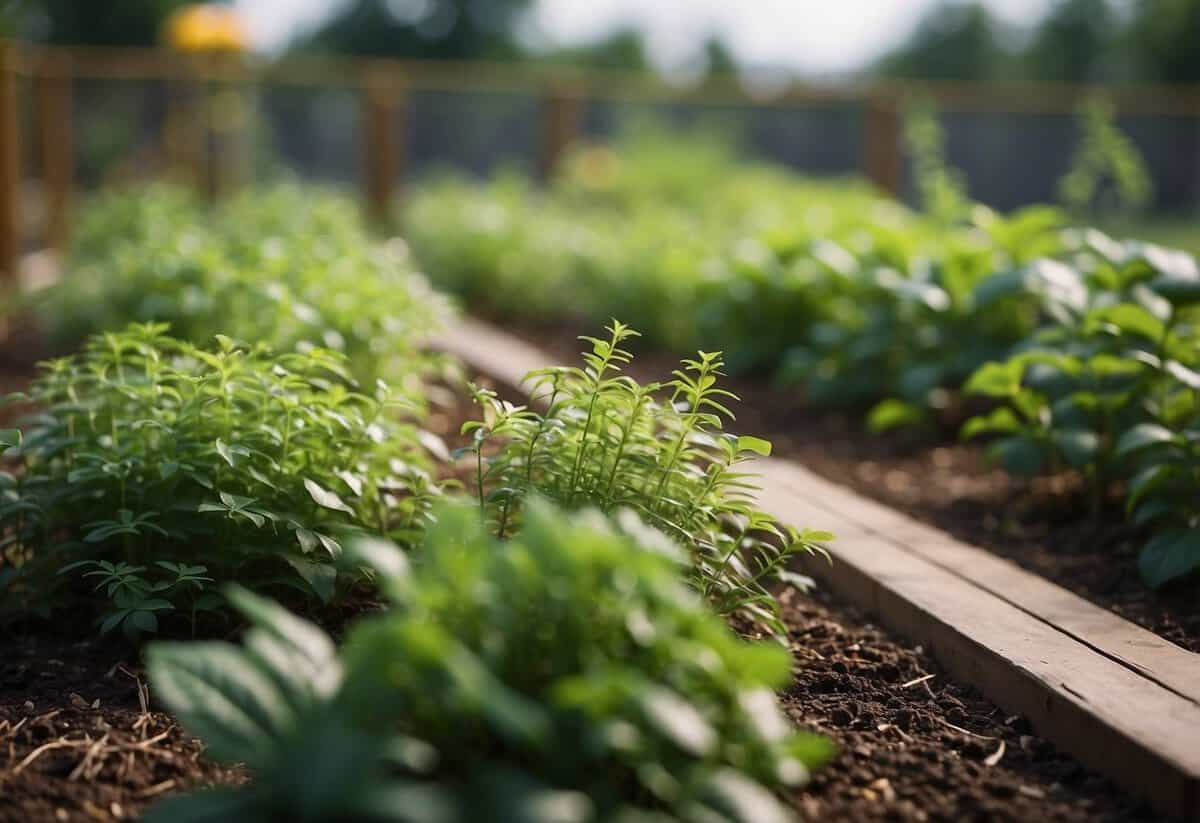October Garden Tips: Keep Your Garden Thriving With These Easy Steps
Gardening in October brings a delightful mix of tasks and rewards as you transition from summer’s end to winter’s approach. You are likely to experience cooler temperatures and the first frosts, creating the perfect opportunity to wrap up your garden chores for the year. How can you make the most of your October garden?

Whether you’re preparing your lawnmower for storage or deciding which vegetables to harvest, October offers plenty of activities to keep you busy. Spending time in the garden this month not only keeps your plants thriving but also gets you ready for the seasons ahead. Enjoy the crisp air and vibrant autumn colors as you tend to your garden.
1) Plant Garlic

Planting garlic in October is a great choice. Start by separating the cloves but keep the papery skin on.
Plant them with the pointed side up and the root side down. Set each clove about 2-3 inches deep and space them 6-8 inches apart.
If you live in a cooler climate, cover the bed with mulch to protect the cloves during the winter. Water the area well right after planting to help the cloves settle in.
For detailed tips, visit Harvest to Table’s guide on growing garlic.
2) Mulch Perennials

Mulching your perennial plants is important in October. It helps insulate the roots as temperatures start to dip.
Mulch keeps your perennials from blooming during unexpected heat waves in winter. Without it, early blooming can lead to damage when cold returns.
Remember to wait until the ground has frozen before adding mulch to plants like roses.
3) Harvest Pumpkins

October is the perfect time to harvest pumpkins.
Start by looking for a deep orange color and hard rind.
Use sharp pruners or a knife to cut the pumpkin from the vine.
Leave a 3- to 4-inch stem to help prevent decay.
Check the weather; pick pumpkins before frost hits to avoid damage.
Happy harvesting!
4) Divide and Replant Perennials

October is a great time to divide and replant perennials. Crowded plants can suffer from reduced blooms and increased vulnerability to disease.
Start by digging up the entire plant gently. Separate the clumps using your hands or a sharp tool. Ensure each new section has enough roots.
Prepare new holes for each section. Make sure the soil is loose and add compost if needed. This helps the plants establish themselves.
Replant the sections with enough space between them. Water them well after planting to help them settle in their new spots. For more detailed steps, visit How and when to divide perennials.
5) Plant Cover Crops

Planting cover crops in October helps improve your soil. Use options like annual rye or clover in empty garden spots to reduce weeds and increase nutrients.
These plants also protect your garden beds from erosion during fall and winter. For more tips, check out this October Gardening Guide.
It’s important to plant cover crops as early as possible for the best results. For detailed guidance, visit Tips for Planting Cover Crops.
6) Clean Up Vegetable Gardens

Remove all plant debris from your vegetable garden. This helps prevent diseases and pests from overwintering in your garden beds.
Take out supports like tomato cages and stakes. Wash them with a solution of water and bleach to kill any disease, then store them indoors.
Clear away fallen leaves and fruits. These can attract pests and harbor diseases if left on the ground.
7) Rake Leaves

Raking leaves can be a big job, but it’s important for keeping your garden tidy. Start by stretching to avoid any muscle strains. It’s best to rake on a dry day. Wet leaves are heavier and can be harder to collect.
Remember to take breaks frequently. Small, steady movements help avoid injury. Once you’ve gathered the leaves, consider composting them. They make excellent fertilizer and soil conditioner for next year. For more tips on leaf raking, check out these tips.
8) Compost Garden Debris

Cleaning up your garden in October is crucial. Gather fallen leaves, spent plants, and other yard waste.
Start by breaking down larger pieces. This speeds up the composting process.
Add the debris to your compost pile. Layer with browns and greens for a balanced mix.
Keep the pile moist but not soggy. Turn it regularly for even decomposition.
Using composted garden debris enriches your soil, preparing it for the next planting season.
9) Protect Sensitive Plants

Make sure to cover sensitive plants before a frost hits. Use items like gallon water or milk jugs with the bottoms cut out for a quick shelter. These jugs can provide effective protection for your plants.
You can also use frost cloths or old blankets to cover plants at night. Just remember to remove them during the day to let sunlight in. For more details, check out how you can protect plants from frost.
Bring potted plants indoors if possible. Plants like Mimosa pudica, known for their sensitive leaves, will benefit from indoor warmth.
10) Plant Spring Bulbs

Planting spring bulbs in October ensures you get beautiful blooms when winter ends. Choose from a variety of bulbs like tulips, daffodils, and crocuses.
Make sure you plant them pointy side up. Dig holes about 8 inches deep for large bulbs and 4 inches for smaller ones.
Consider adding compost to the soil to give your bulbs a nutrient boost. After planting, water the bulbs well and cover them with a layer of mulch to protect them over winter.
For detailed instructions, visit this guide on planting bulbs in fall. Happy gardening!
Preparing Your Garden for Fall

Getting your garden ready for fall involves clearing away old plant material and improving the soil for next season. By addressing these tasks, you can ensure a healthy and productive garden next year.
Cleaning Up Debris
Remove dead plants, leaves, and branches from your garden. These can harbor pests and diseases that can harm next year’s crops. Start with pulling out old vegetable plants and spent annuals. Using a rake, gather fallen leaves and twigs spread across your garden beds. Composting these materials helps recycle nutrients.
Check your garden supports like trellises and stakes. Clean them thoroughly before storage to prevent rust and decay. Ensuring these items are in good shape now will save you time next spring. Moreover, keep an eye out for any invasive weeds and remove them promptly to prevent future problems.
Soil Conditioning
Enrich your garden soil before winter. Spread a 2- to 3-inch-thick layer of compost over your beds. There is no need to till it in, as precipitation and soil organisms will mix it through the soil for you, improving its structure and nutrient content.
Plant cover crops such as mustard, peas, or clover. These help prevent soil erosion and when turned into the soil in spring, they add valuable nutrients. Another practice you can consider is applying a high-nitrogen fertilizer after the final mowing of your lawn. This helps promote early green-up in the spring and ensures your soil remains fertile.
For more information on these practices, check out this fall garden checklist and these fall gardening tips.
Planting Fall Vegetables

Planting vegetables in the fall can extend your harvest season. Focus on cool-weather crops that can handle a bit of frost, and consider using cold frames to protect your plants as temperatures drop.
Cool-Weather Crops
Cool-weather vegetables thrive when the temperatures start to cool down. Leaf lettuce, for example, can be ready to cut in just 45 to 50 days, making it a quick-growing option. Spinach and radishes also grow quickly and can handle light frosts, typically surviving in temperatures as low as 30˚F to 32˚F.
Kale and collards are hardy crops that can withstand even harsher frosts. Cauliflower is another good choice but needs more planning since it can take up to 10 weeks to mature. Make sure you plant these early enough in the season to allow for their longer growing times.
Experimenting with different crops can yield a more varied fall harvest. Often, you can find quick-growing seeds at garden centers specifically labeled for fall planting. Root vegetables like beets and parsnips are also excellent choices as they can develop underground even as the weather cools.
Using Cold Frames
Cold frames are excellent tools for extending your growing season. They act like mini-greenhouses, trapping heat and protecting your vegetables from frost. You can build simple cold frames using old windows and wooden frames. Cover your crops during the night and remove the covers during the day to let in sunlight and fresh air.
When building your cold frame, make sure it slopes at an angle to capture as much sunlight as possible. It’s also essential to ventilate the frames properly. On sunny days, you will need to prop open the frames to prevent overheating inside.
Using cold frames allows you to continue harvesting fresh vegetables well into late fall and even early winter. This can be especially useful for leafy greens and root vegetables that benefit from the extra protection.







